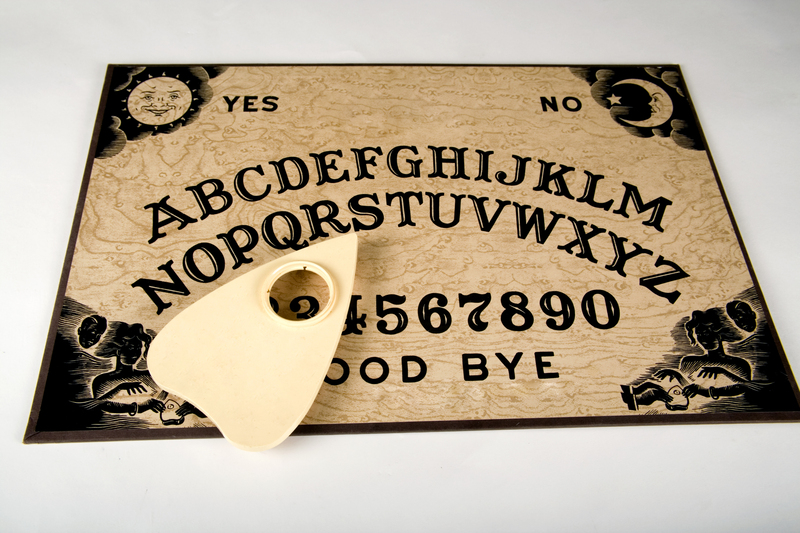Mastering the Art of Piano Moving: Why It's a Task Best Left to Professionals
Posted on 09/06/2025
Mastering the Art of Piano Moving: Why It's a Task Best Left to Professionals
Pianos stand as icons of musical versatility and beauty, gracing homes, concert halls, and studios with their impressive presence. But behind their aesthetic elegance and enchanting sounds lies a truth few consider until the time comes to move one: piano moving is a feat of expertise, planning, and painstaking care. This raises an important question--should you attempt moving a piano yourself, or trust the experts? This comprehensive guide delves into why mastering the art of piano moving is a task best left to seasoned professionals, exploring every aspect to help you make an informed decision.
Table of Contents
- Why Are Pianos So Challenging to Move?
- Types of Pianos and Their Moving Challenges
- The Risks of DIY Piano Moving
- Piano Movers: The Professional Difference
- What to Look For in a Piano Moving Company
- How Professional Piano Moving Works: Step by Step
- Tips for Preparing Your Piano for a Move
- Cost Considerations When Hiring Piano Movers
- Conclusion: Trust the Experts for a Safe Piano Move
Why Are Pianos So Challenging to Move?
The task of moving a piano extends far beyond what meets the eye. Pianos are not just heavy--they are delicate, cumbersome, and structurally unique. Attempting to relocate one involves potential risks to the instrument, your property, and personal safety.
- Weight: The average upright piano can weigh 300-500 lbs, while a grand piano can reach up to 1,000 lbs or more.
- Delicacy: Despite their heft, pianos house hundreds of finely tuned parts that are sensitive to movement, vibration, and impact.
- Size and Shape: Their irregular shapes and large sizes complicate maneuvering in tight spaces, through doorways, or up stairs.
- Value: A single poorly executed move could result in structural damage or costly repair bills.
Types of Pianos and Their Moving Challenges
There are several major types of pianos, each presenting unique moving complexities. Understanding these differences is crucial for a successful relocation.
Upright Pianos
- Compact but Heavy: Though smaller than grands, their weight is concentrated in a vertical shape.
- Handling Challenges: Must be kept upright; tilting incorrectly can disrupt internal mechanisms.
Grand and Baby Grand Pianos
- Bulky Design: Grand pianos are wide and require more space and planning to move.
- Dismantling: Typically, legs, pedals, and lids must be carefully removed and packed separately.
Digital and Console Pianos
- Lighter Weight: Digital pianos are more portable but can still suffer damage from drops or improper handling.
- Sensitive Electronics: Protection from jostles, moisture, and shocks is vital.
Regardless of the type, all pianos demand specialized handling techniques during a move.
The Risks of DIY Piano Moving
It can be tempting to enlist a few strong friends and some basic tools for your piano move, but this approach is fraught with peril:
- Injury Risks: Improper lifting techniques can result in serious back strains, muscle pulls, or crushing injuries.
- Damage to the Piano: Even minor bumps or drops could damage strings, keys, pedals, or the case.
- Home Damage: Scratched floors, dented walls, and damaged doorways are common when maneuvering large, awkward objects.
- Insurance Limitations: Without professional movers, home insurance may not cover damage or accidents during the move.
- Improper Handling: Lacking knowledge on proper disassembly and reassembly can compromise the piano's sound quality and function.
Is it worth risking your valuable instrument--and your health--for a DIY piano move?
Piano Movers: The Professional Difference
When it comes to piano relocation, professional piano movers offer substantial advantages that go far beyond their muscle power:
- Specialized Equipment: Professionals utilize piano dollies, moving straps, skid boards, and padding specifically designed for pianos.
- Expertise: Seasoned movers possess the skills to disassemble, transport, and reassemble all types of pianos with minimal risk.
- Insurance: Reputable companies carry comprehensive insurance to protect both your instrument and your property.
- Efficiency: With systematic planning and teamwork, pros move pianos quickly and safely, saving you time and stress.
- Planning for Obstacles: Professionals survey the space, measure doorways, and plan routes to preempt any moving hurdles.
Entrusting your piano to experts isn't just about convenience--it's about protecting your investment and peace of mind.
What to Look For in a Piano Moving Company
Not all movers are created equal. When choosing a piano moving service, consider the following:
- Experience: Look for companies with a proven track record moving pianos of all types.
- Insurance: Verify their insurance coverage and what is included in the event of an accident.
- Accreditation: Affiliations with organizations like the American Moving & Storage Association indicate professionalism.
- Customer Reviews: Check online reviews and testimonials from previous piano moving clients.
- Transparent Pricing: Reputable movers should provide clear, upfront quotes with no hidden fees.
Select your piano mover with due diligence to ensure the safety of your treasured instrument.
How Professional Piano Moving Works: Step by Step
Wondering what to expect? Here's a breakdown of the typical professional piano moving process:
1. Pre-Move Assessment
- Examine the piano's make, style, size, and condition.
- Survey the moving environment--stairs, hallways, tight corners, doorframes.
- Develop a tailored plan for moving the piano out of its current location to the truck and into the new space.
2. Preparation and Protection
- Wrap the piano in moving blankets, securing delicate surfaces against scratches and impacts.
- Disassemble components (legs, pedals, music stands) as necessary, labeling and protecting parts for reassembly.
3. Secure Lifting and Loading
- Use dollies, ramps, and crew strength to safely transport the piano from the building to the moving vehicle.
- Secure the piano inside the truck using pads and straps to prevent shifting during transit.
4. Transportation
- Drive carefully, maintaining temperature control when possible to protect wood and tuning.
5. Delivery and Setup
- Reverse the entire process, ensuring the piano is positioned exactly where you want it in your new space.
- Reassemble parts, inspect for any damage, and offer post-move tuning recommendations if necessary.
Every step is orchestrated with deliberate care and expertise, ensuring your instrument remains unharmed and ready to make music again.
Tips for Preparing Your Piano for a Move
Even when working with professionals, your assistance before moving day can streamline the process:
- Clear Pathways: Remove rugs, furniture, or obstacles from hallways and doorways.
- Communicate: Inform movers about stairs, elevators, fragile items, or narrow turns ahead of time.
- Protect the Environment: Cover floors for added protection and reserve elevators if in a building.
- Check Instrument Contents: Remove sheet music, metronomes, or stored objects from inside the piano bench or top.
Proper preparation helps ensure a smooth, incident-free move.
Cost Considerations When Hiring Piano Movers
The cost to move a piano varies based on several factors:
- Piano Size and Type: Larger, heavier, or more complex pianos cost more to move.
- Distance: Local versus long-distance moves can have significantly different price points.
- Obstacles: Stairs, narrow hallways, or challenging terrain may incur extra charges.
- Service Level: Costs may rise if storage, tuning, or climate-controlled transport is needed.
While professional piano moving isn't cheap, the potential savings in avoiding repairs, replacements, and injury are almost always worth the investment.
Conclusion: Trust the Experts for a Safe Piano Move
Mastering the art of piano moving is about more than brute strength--it's a blend of science, experience, and artistry that only dedicated professionals possess. Protect your cherished piano, your home, and your well-being by choosing qualified piano movers for your next relocation. The confidence, safety, and musicality you preserve will reward you for years to come.
Don't risk your treasured instrument--leave piano moving to the professionals and let your music play on!





